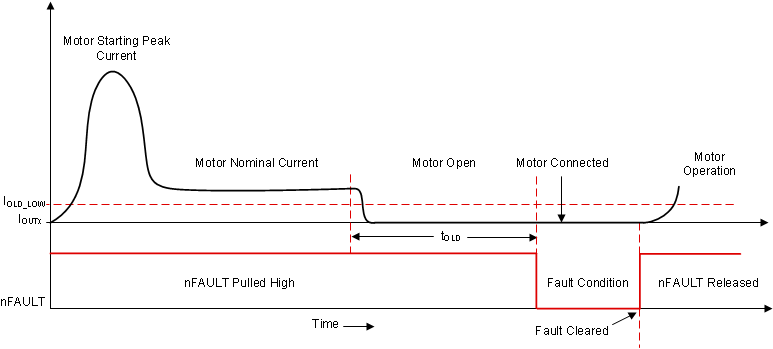SLVAE49C April 2019 – April 2022 DRV8847 , DRV8873-Q1 , DRV8904-Q1 , DRV8906-Q1 , DRV8908-Q1 , DRV8910-Q1 , DRV8912-Q1
4 Low-Current Active Open Load Detection
Low-current active OLD, found in the DRV89xx-Q1 devices, is designed for loads with a smaller motor nominal current than the IOLD of active OLD. Figure 4-1 shows that the low-current active OLD threshold (IOLD_LOW) replaces the IOLD from the active OLD. In low-current active OLD, IOLD_LOW is around 10 times less than the active OLD's current OLD threshold. With IOLD_LOW being 10 times less than IOLD permits for more flexibility in OLD when utilizing a load that requires a small nominal current to trigger an OLD event. If a low-side FET is turned ON and the current flowing in that low-side FET is less than the IOLD_LOW for at least the OLD deglitch time (tOLD), then an OLD event has occurred.
 Figure 4-1 Low-Current Active OLD
Operation
Figure 4-1 Low-Current Active OLD
OperationThe low-current active OLD has trade offs that must be considered:
- In the DRV89xx-Q1 devices, this OLD is only applicable for the current flowing in the low-side FETs, meaning it cannot be detected using the high-side FETs.
- If low-current active OLD is used, the overcurrent protection threshold for the low-side FET is also reduced by 11 times.
- The RDS(ON) of the low-side FET will increase by 11 times, hence the thermal performance has to be monitored. However, given the current across the low-side FET is expected to be low, the thermal dissipation of the low-side FET is expected to be limited.